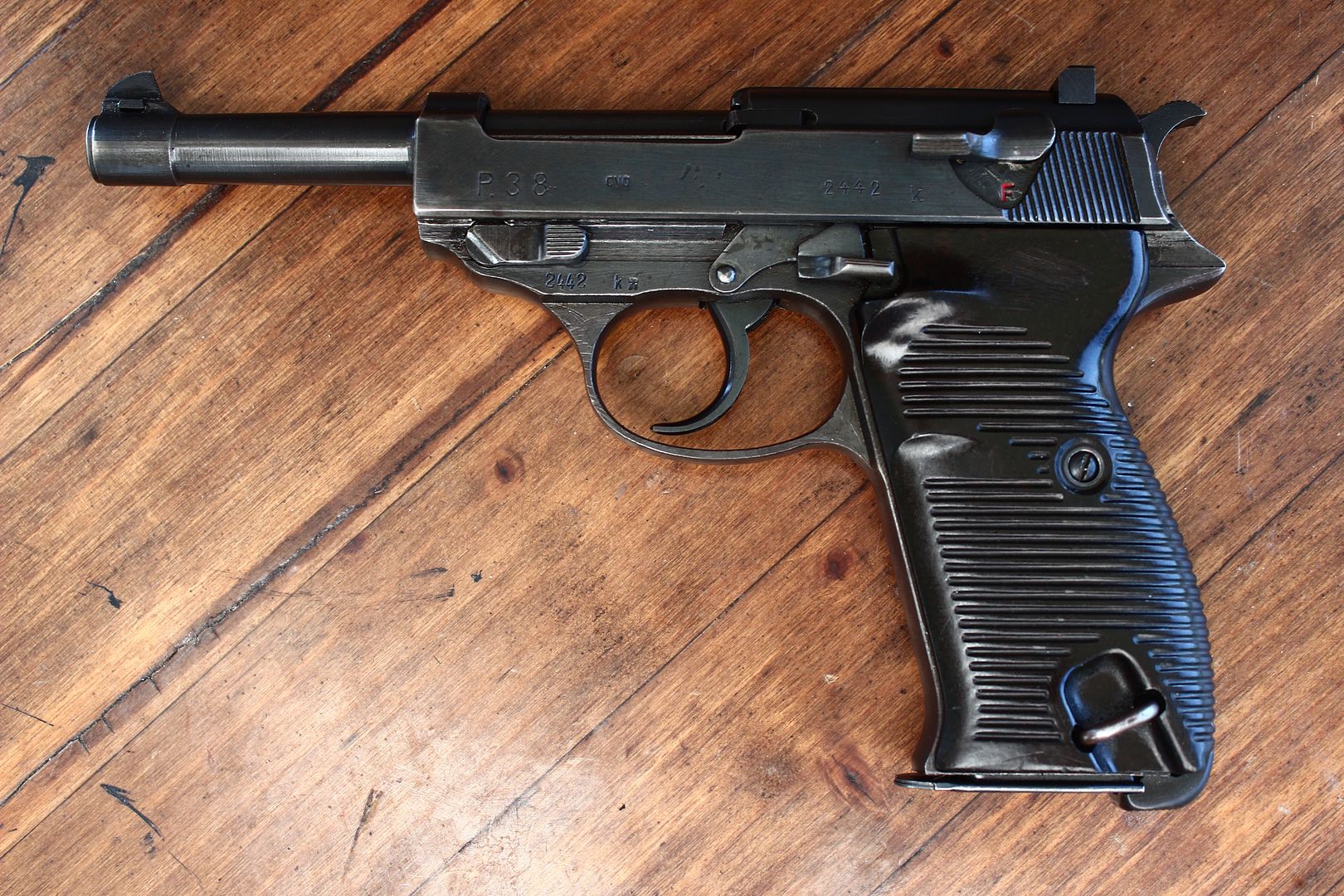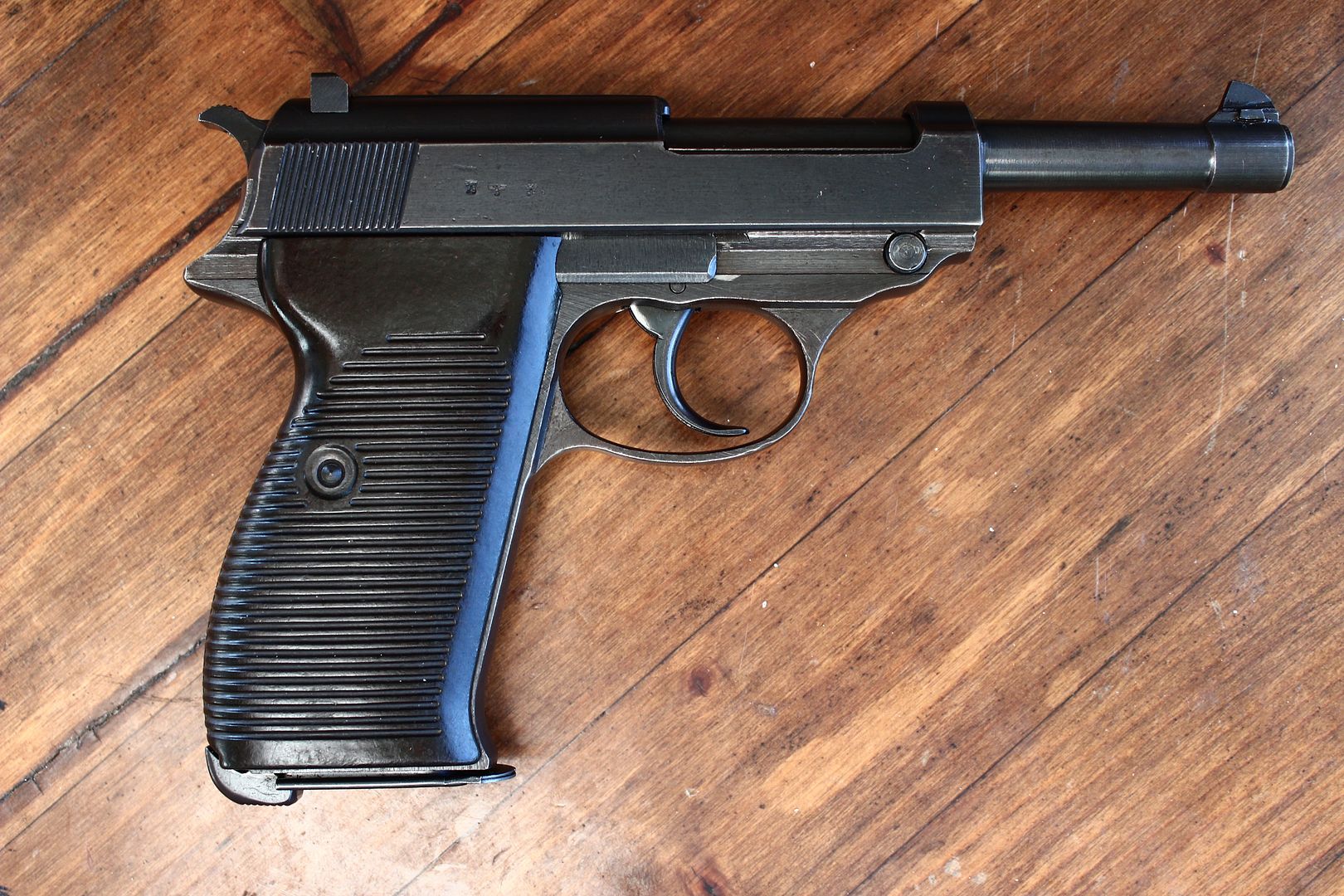The P.38 and P1 pistols come in three major flavors:
1. Wartime produced pistols were marked P.38 and had steel frames.
2. Post war commercial models were labeled P.38 but had aluminum frames.
3. Post war military models were labeled P1 and had aluminum frames.
The notable exceptions here are:
a) The first batch of new build post war German military pistols (made in 1957-58) which had aluminum frames but were labeled P.38. The rest of the post war German military pistols were produced from 1963 onward and both had aluminum frames and were marked P1;
b) the small number of post war steel frame pistols made under French occupation marked P.38 (these pistols often have sheet metal grips);
c) the small number of steel framed, short barreled P.38Ks made for a few years from about 1973; and
d) parts guns assembled from a variety of P.38 and P1 parts with non matching slide and frame numbers.
-----
You'll potentially encounter wartime P.38s that were used by the West German military and West German police. These pistols were P.38s that were refinished and had the swastikas stamped out to comply with laws in Germany banning the swastika. Both the refinish and the defacing of the swastika reduces the value of the pistol as a collector, but it's an interesting key to it's history and they make superb shooters.
Matching numbers add value to a wartime P.38, but in addition the grips have to match. There are also variations in the grip design that are associated with the manufacturer and time period of the pistol and while not numbered to the pistol the grip still has to be correct for the date and manufacture of the pistol.
----
There are also some mechanical differences in the aluminum framed versions;
Around 1970 Walther started refurbishing P1s with some updates and improvements. The slide is slightly fatter and has a stronger de-cocking lever. The frame has a steel hex pin in the frame and both the slide and frame changes are designed to prevent cracking. The newer slides can be identified by the presence of serrations ahead of the de-cocking lever. Some of these upgraded P1s were refurbished older P1s while others were new build pistols and will be found with all the improvements but no re-work mark. You'll also find refurbished P1s that don't have the improvements, largely depending on whether the new parts were on hand at the time of the re-work or not. Most reworked P1s will have a W followed by a date in a month year format as such - W 11/85.
---
In general you don't want to pay more than $400-500 on a post war model or $700-$800 for a wartime model, unless it really is something pretty special.
If you're shooting a matching number P.38, be aware that like the P08 the matching numbers add value.
The good news for the P1 is that while the aluminum frame won;t tolerate full power loads as well as the steel framed P.38, there are still loads of parts out there, and if you've got a parts guns with mis matched numbers, there's no loss in value if you break something and replace it with another surplus part.
Below is a CYQ (Spreewerke, manufactured in Czechoslovakia) P.38 made about mid to late 1943 based on the serial number block and the "41" resin compound used in the Posselt style grips.
I paid $650 for it about a year ago with a spare magazine and a West German Police holster, leaving the price of the P.38 itself at about $570. That's a decent price for a matching serial number P.38 with the correct grips in very good condition.
The Spreewerke manufactured P.38s were not date stamped so dating them has to be done by the serial number block based on the timeframe of production and the number produced. Like the P.08, the P.38 used serial number blocks of 0-9,999 with a new letter suffix (a,b c, d, e, etc) used for each successive block of 10,000 pistols.


 Win a FREE Membership!
Win a FREE Membership!